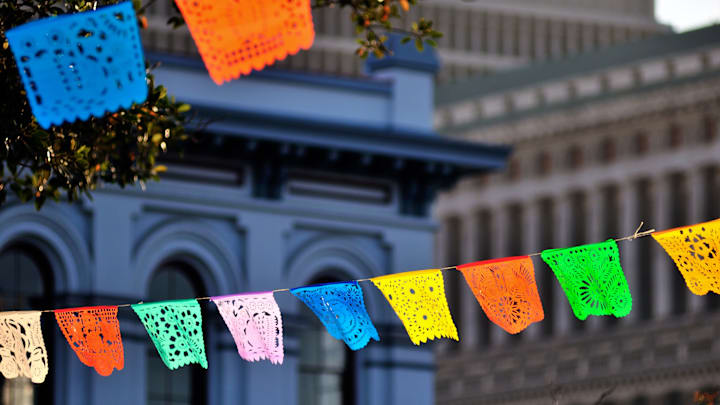Cinco de Mayo may translate to “Fifth of May,” but there is a lot more to the annual springtime celebration of Hispanic heritage and culture in the United States than the many margarita-soaked festivities that ensue all over the nation. So before you throw on your sombrero and head to tequila town, take a shotful of these five hechos you may not have known about the holiday.
- Cinco de Mayo commemorates Mexico’s victory against France at the Battle of Puebla.
- Congress passed a resolution recognizing Cinco de Mayo.
- Los Angeles hosts one of the world’s largest Cinco de Mayo celebrations.
- Cinco de Mayo’s signature liquor dates back to the 16th century.
- Cinco de Mayo is not Mexico’s Independence Day.
Cinco de Mayo commemorates Mexico’s victory against France at the Battle of Puebla.

We drink margaritas on this day because a small, rag-tag group of Mexicans beat the odds and defeated a much larger, better-equipped French army at the Battle of Puebla in 1862. The battle was part of the larger Franco-Mexican War that lasted another five years—France wanted to take over the North American country after a cash-strapped Mexico defaulted on some European loans—and resulted in Mexican victory. The first Cinco de Mayo celebrations are said to have occurred in California not long after the conclusion of the Battle of Puebla, where overjoyed Mexican gold miners whooped and hollered and shot off guns and fireworks.
Congress passed a resolution recognizing Cinco de Mayo.
In the mid-20th century, Cinco de Mayo became more of an American celebration of Hispanic heritage and culture than a Mexican holiday. Cinco de Mayo earned widespread adoption in the United States during the 1960s and El Movimento (the Chicano Civil Rights Movement), and Congress passed a resolution in 2005 to recognize the “historical significance” of the holiday.
Los Angeles hosts one of the world’s largest Cinco de Mayo celebrations.

Each year, downtown LA blocks off major streets and welcomes hundreds of thousands of people to Fiesta Broadway, an afternoon of music, food and crafts in honor of Hispanic heritage. Fiesta Broadway dates back to 1990, and was modeled after Miami’s famous Calle Ocho street party.
Cinco de Mayo’s signature liquor dates back to the 16th century.
Tequila, the staple of many a modern Cinco de Mayo celebration, is derived from the agave plant. Its modern incarnation is brewed from the blue agave native to the Jalisco region of Mexico, and dates back to the 1500s when the Spanish occupation introduced the European art of distilling. But before that, the Aztec people had brewed a beer-like beverage called pulque from a related agave plant (the maguey) for centuries. Only priests could drink it, and how it was invented is the stuff of myth. Several popular legends include one involving a drunken opossum pulling nectar from the plant, and another asserting that ancient gods sent lightning to split the plant and reveal the nectar to humans.
Cinco de Mayo is not Mexico’s Independence Day.

Many of those celebrating Cinco de Mayo in the U.S. mistake it for Mexico’s Independence Day. Mexico’s Día de la Independencia is September 16. On that day in 1810, the Spanish priest Miguel Hidalgo y Costilla gave a rousing speech calling for Mexicans to launch a revolution against Spain and in support of racial and class equality. Eleven years later, Spain accepted Mexico’s declaration of independence.
Read More About Holidays Below:
A version of this article was originally published in 2016 and has been updated for 2025.
